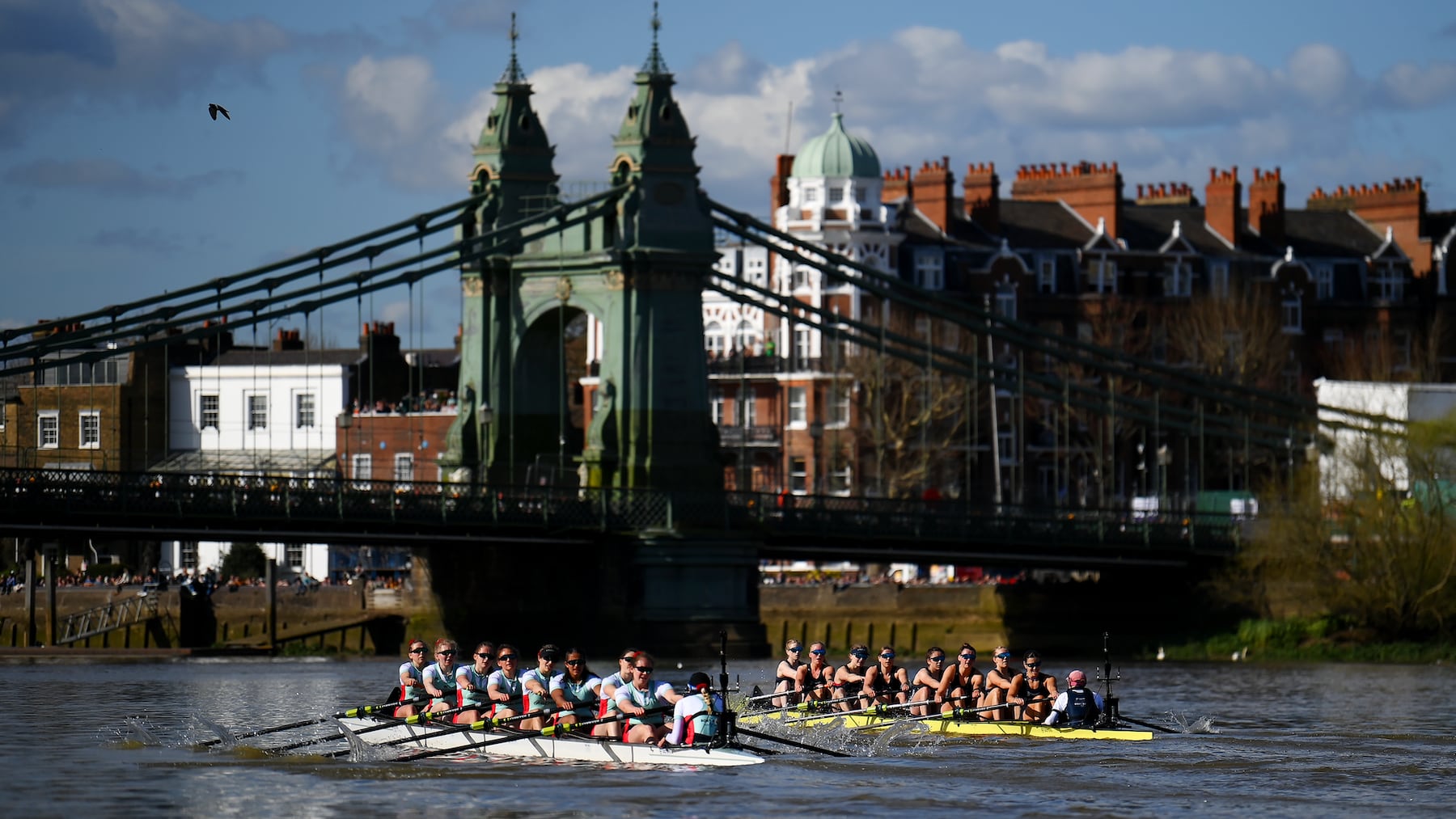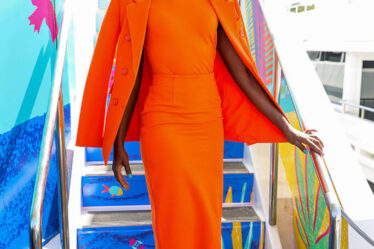
Even the president of Chanel’s watches and fine jewellery division hadn’t anticipated the move. “It was totally unexpected,” admitted Frédéric Grangié in an interview with BoF ahead of next Sunday’s annual Boat Race between Oxford and Cambridge universities, now labelled the Chanel J12 Boat Race after the luxury giant’s J12 watch. “It happened by chance. Before June last year, I had no idea I was going to do this.”
The deal with the Boat Race Company Limited is a landmark for Chanel. “It’s very important for us because it’s the first sponsorship agreement in our history,” said Grangié, who declined to disclose the size of the company’s investment in the race. “It wasn’t part of a big power point presentation saying we need to become title sponsor, nor part of something inspired by what’s happening on the market or with other brands. However, it felt really right and it happened really naturally.”
The first Boat Race was held nearly 200 years ago, making it one of the oldest amateur sporting events in the world, which Grangié said gave it unique appeal. “You are talking about the ultimate level of sport with the purest values,” he said. “I didn’t think I could find anything better.”
While the Boat Race is niche compared to the sports events that typically attract sponsorship from global brands, last year an estimated 250,000 spectators lined the banks of the River Thames in London to watch the 4.25-mile competition, which takes crews of eight men or eight women around 17 to 20 minutes to complete. Four to five million more watch along on domestic television, with another 10 to 15 million thought to tune in around the world.
Controversy has occasionally landed the Boat Race in the headlines. Last year high levels of E. coli in the Thames threatened to disrupt the event. And last month, three Cambridge rowers studying for PGCEs (teacher training) were declared ineligible to race after Oxford complained their courses were for “certificates” and not degrees.
Grangié admitted he has few performance targets in year one. “We will learn a lot on coverage from the first edition,” he said. Grangié said the deal with the Boat Race Company would run “way beyond 2029,” the event’s bi-centenary.
Critics said the tie-up wasn’t as far-fetched as it might look. “Although this may seem like a left-field move from Chanel, it does actually make sense,” said watch and jewellery expert Laura McCreddie-Doak. “Coco [Chanel] was introduced to the world of sailing by her love Bendor, Duke of Westminster, who owned a yacht called The Flying Cloud, and she was a major player in the Riviera set, where she redefined the scene’s wardrobe with tricots, shorts, tennis dresses and golf shoes thought to have been inspired by the crew on the Duke’s yacht.
“Of course, yachting isn’t the same, but there is still an elegance to the Boat Race that fits perfectly with the Chanel aesthetic,” she continued. “The Maison never does anything that doesn’t fit with mademoiselle – either her look, the collections she created, or her pursuits. The only other sport Coco took inspiration from was polo and that’s already taken [by Cartier].”
Grangié said the connection to two of the world’s leading universities, and the fact that it’s 100 years since Chanel entered the UK market were significant factors in his decision-making, too.
The profile of the women’s Boat Race has grown since 2015 when it was raced on the same day and the same course as the men’s race for the first time. “In 2027, it will be 100 years of the first women’s competition, which is particularly important to us at Chanel,” said Grangié. “And then in 2029, 200 years of the men’s competition, when we will have big awareness in terms of elevation.”
Chanel made its first watch, the Premier, in 1987, following it up with the all-ceramic, Swiss Made J12 in 2000. Over the past 25 years there have been countless iterations of the design, including the Chanel J12 Bleu X-Ray, a full-sapphire version of the watch, introduced in Geneva this week during the annual Watches and Wonders fair.
According to Morgan Stanley’s recent annual watch report, Chanel sold 60,000 watches last year and recorded revenues of 380 million Swiss francs, figures Grangié declined to confirm. That would make it Switzerland’s 20th largest watch company, ahead of Piaget, Van Cleef and Breguet, if the investment bank’s estimates are accurate.
“When I look at J12, I know we have one of the great watches on the market,” said Grangié. “It has product integrity, and that is important to us. We are a very serious player.”
Chanel has also invested in some of Switzerland’s most highly regarded independent watchmakers, including Romain Gautier in 2011 and F. P. Journe in 2018. Last year, it announced it had acquired a 25 percent stake in MB&F, an elite maker that per Morgan Stanley produces 360 watches a year, generating revenues of 47 million Swiss francs.
Chanel also has a minority stake in the specialist Swiss watch movement manufacturer Kenissi, which is majority owned by Tudor, part of Rolex, and that has also made movements for a number of other luxury watch brands, including Breitling and TAG Heuer.
Grangié said that like the Boat Race sponsorship, Chanel’s investments in other watch companies weren’t planned, but “happen very often through encounters.” He said: “It sounds counter-intuitive, but there’s not a huge business plan behind it. It’s not a group, it’s a circle of watchmakers. I don’t see any [further acquisitions] in the years to come.”
Content shared from www.businessoffashion.com.



